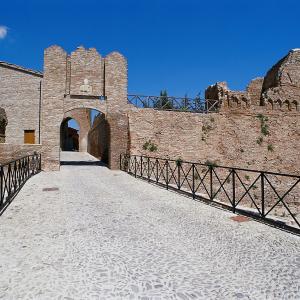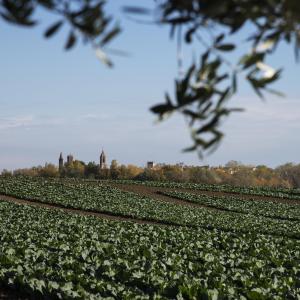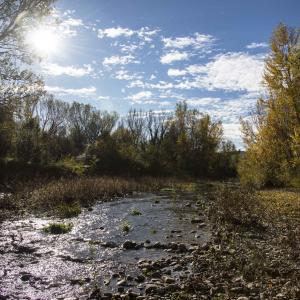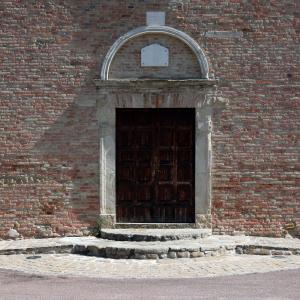An itinerary between the Conca and Marano rivers
This itinerary winds through the territory of the two river parks of the Conca river and the Marano River and touches a landscape and historical context of considerable interest.
It starts out from the small port of Portoverde, characteristic for its Mediterranean-style buildings that surround the dock where numerous pleasure boats are moored.
Following the route, you cross the state road and reach Marco Simoncelli Misano World Circuit, home to important international competitions. Once you reach the intersection with the road to Morciano di Romagna, in the locality of Cella, the itinerary continues on to Misano Monte.
Here you can enjoy a view of the coast from above. Once you reach the crossroads for Coriano, you continue on towards San Clemente going through the Castelleale locality, named in honor of Leale Malatesta who had a fortified countryside residence built on the site.
The center of San Clemente consists of a small medieval hamlet enclosed by a wall of Malatesta origin that is only in part still visible. Particularly striking is the nineteenth-century parish church that overlooks the main square of the village and where you can admire paintings of the eighteenth century.
We then reach Coriano, in the valley of the Marano River, almost in the center of the provincial territory. It includes both lowland, where there is florid agriculture, as well as numerous handmade and industrial activities, and low hilly land characterized by a large spread of vineyards from which an excellent wine is obtained. The Malatesta family also owned a castle in Coriano, dating back to the 15th century, of which today it is possible to see only the remains of what was once the entrance, the tower and part of the walls. There are numerous festivals including those of olive oil and autumn products.
In Montecolombo the whole village has maintained a recognizable medieval structure: the entrance gate with its Malatesta forms is beautiful and the surrounding walls are noteworthy. The clock tower is also included in the complex. The production of wine is remarkable and of great value, given the presence of numerous farms and holiday farms in the area. There are a great number of DOC wines, often receiving awards throughout the Region. And there are also several high-quality DOP oils. This municipality boasts the presence of a large number of farm holidays, with a significant offer of accommodation. All the farms are characterized by valuable and highly-qualified crops and productions from the point of view of quality.
In the vicinity of Montecolombo, in the same municipality, there is Montescudo whose hamlet deserves to be visited because it has a massive wall built by Sigismondo Pandolfo Malatesta. Its impressive height and inclination should have ensured the impregnability of the fortress. Also worth seeing are the Civic Tower dating back to the year 1300, the extraordinary singular ice-house (from the Malatesta era) positioned on the side of the main square, the underground walkways, the secret passages that from the sea-side lookout tower lead to the fortress, the well and the steep staircase. The ice-house was once used to preserve, until late summer, the frozen snow which was then sold to the coastal villages and used for the conservation of fish. Among the folkloristic and cultural events organized by the municipality, the potato festival which takes place in August is an absolute must-do. Potatoes find the ideal growing conditions in the Montescudo area.
Leaving Montescudo we head towards Trarivi. Here we recommend a stop at the Museum of the Eastern Gothic Line in the Church of Peace, where rich documentation is preserved that recalls the tragic events of the Second World War.
At the cemetery of Trarivi, turning left you reach Vallecchio. The road makes a steep descent to the "ford", which can also be traveled by car, over the Marano stream. After crossing the stream, you turn right towards Ospedaletto, traveling alongside the river.
The road winds right through the center of the Marano Park, a protected area. After the village of Ospedaletto, you turn right towards the hamlet of San Salvatore, after which you arrive at the crossroads that takes you back to the state road leading from Coriano to Rimini. A visit to the Parish church of San Salvatore (12th century) is worth a stop and it is right on the road. In its constructive simplicity, it preserves the original almost unchanged architecture with a beautiful sandstone facade interspersed with brick material.
We approach the end of the itinerary by returning to the sea.



